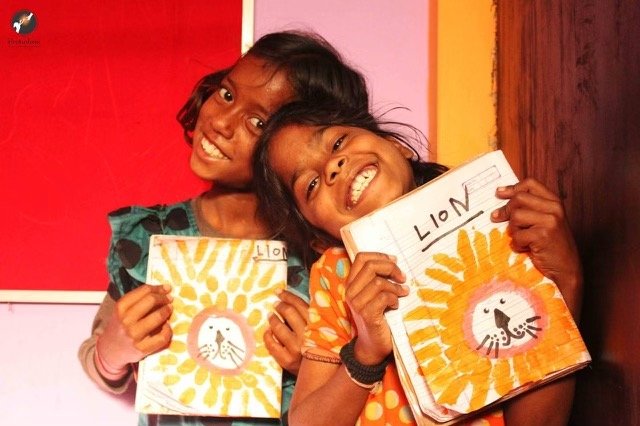
Gender transformative education (GTE) is an approach that aims to address and challenge the rigid gender norms and stereotypes that often lead to discrimination and violence. The GTE promotes gender equality and inclusivity by providing individuals with the knowledge, skills, and attitudes to question and transform these norms.
Art therapy can be an effective tool in the GTE process, as it allows individuals to explore and express their identities and experiences in a safe and non-judgmental space. Through art-making, individuals can visually represent their identities and experiences, allowing them to better understand and communicate them with age-appropriate vocabulary and in a brave space with trusted facilitators or educators, aiding the process of healing in safe settings with trusted facilitators.
One of the key components of art therapy in GTE is the use of symbolism and strength-based techniques as Protsahan often uses. Symbolism in art allows children from difficult circumstances to explore and express their feelings and experiences in a non-verbal way. For example, an adolescent who identifies as non-binary may use colours, shapes, and imagery that do not conform to traditional binary representations of gender. This allows them to express their identity in a way that may not be possible through verbal communication.
Additionally, arts as therapy can provide a means for adolescents to challenge and transform rigid gender norms and stereotypes. For example, through art-making, individuals can visually represent and challenge societal expectations and limitations placed on their gender identity. This can be particularly powerful for individuals who may not have the words or language to articulate their experiences.
In group settings, arts can also provide a space for adolescents to connect and learn from one another’s experiences. This can foster a sense of community and validation, as individuals see their own experiences reflected in the art of others. Arts in Protsahan’s context often extrapolates to include conducting creative activities like photography, playing chess or other sports, origami, etc. with the narrative guidance of a trained arts educator and counselling facilitator who deeply understands the socio-cultural context of violence or abuse the child has experienced.
It’s important to note that art therapy should not be used as a standalone solution for GTE. It should be integrated with other forms of therapy and education, such as talk therapy and gender-sensitive education, for a comprehensive approach. At Protsahan, we follow compassionate care models of the HEART approach with children. Additionally, it is essential that art educators and therapists working in the field of GTE have a deep understanding of the complexities of socio-cultural norms, and gender spectrum and are trained to work with individuals from diverse backgrounds and identities.
Arts can be a powerful tool in the process of gender-transformative education-led healing experiences. It provides a means for children and adolescents to explore and express their gender identities and experiences, as well as challenge and transform rigid gender norms and stereotypes. It can also foster a sense of community and validation in group settings, and when integrated with other forms of therapy and education it can be a comprehensive approach for promoting gender equality and inclusivity.

